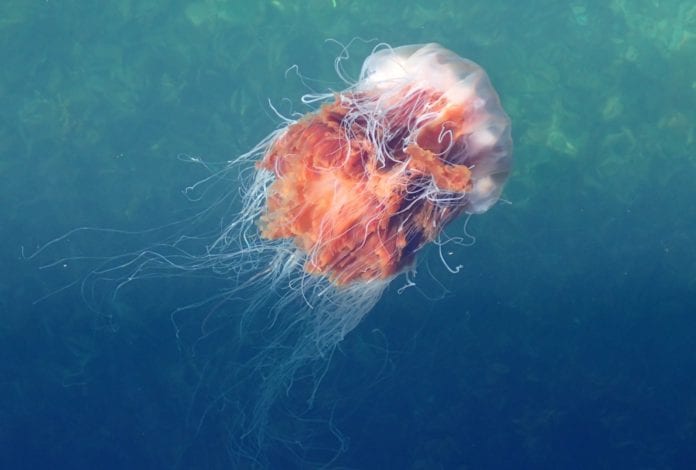Marine experts are at a loss to explain a rash of lion’s mane jellyfish sightings off the west coast, with 61 in Galway alone.
The extremely large and often dangerous jellyfish is no stranger to Irish waters, but is usually seen off the east coast, particularly around Dublin.
According to the National Biodiversity Data Centre, there have been more sighting’s of lion’s mane jellyfish in the west this summer than cuckoos.
There have been 157 recorded sightings along the west coast in Donegal, Sligo, Mayo, Galway, and Kerry, compared with just 122 cuckoo sightings.
Before this year it was almost unheard of for the lion’s mane jellyfish to be seen in Atlantic waters, and marine experts are at a loss to explain what has caused the shift.
Damien Haberlin of the Centre for Marine and Renewable Energy at UCC said of the change, “It is highly unusual in our experience. A lot of lion’s mane on the west coast is a very unusual thing.”
“In fact, up to about two years ago, we would have told people that you don’t get lion’s mane on the west coast.”
“This year has blown that out of the water. We just don’t know what’s going to happen. Maybe next year it will go back to a more normal distribution,” he said.
Some have said that the change in habitat might be attributable to climate change, but that hasn’t been proven.
“Climate change and the warming sea will have an effect. But trying to predict with any level of certainty what that effect will be is difficult,” said Mr Haberlin.
The difficultly in finding a concrete cause is that little is known about the movements and habits of the jellyfish in Ireland.
People swimming in Galway waters have been advised by Jellyfish experts an NUI Galway to be wary as a sting from a lion’s mane jellyfish, though not generally considered fatal, can be extremely painful.
Earlier this summer several people were hospitalised after being stung by a lion’s mane jellyfish, prompting the university to issue advice on what to do if you’re stung.
It’s advised that the best first aid option is to rinse the affected area in vinegar to remove the tentacles, then immerse in 45°C water, or apply a heat pack, for 40 minutes.
While we’re coming to the end of the season where people could expect to encounter a lion’s mane jellyfish, they can still be found until late September.













